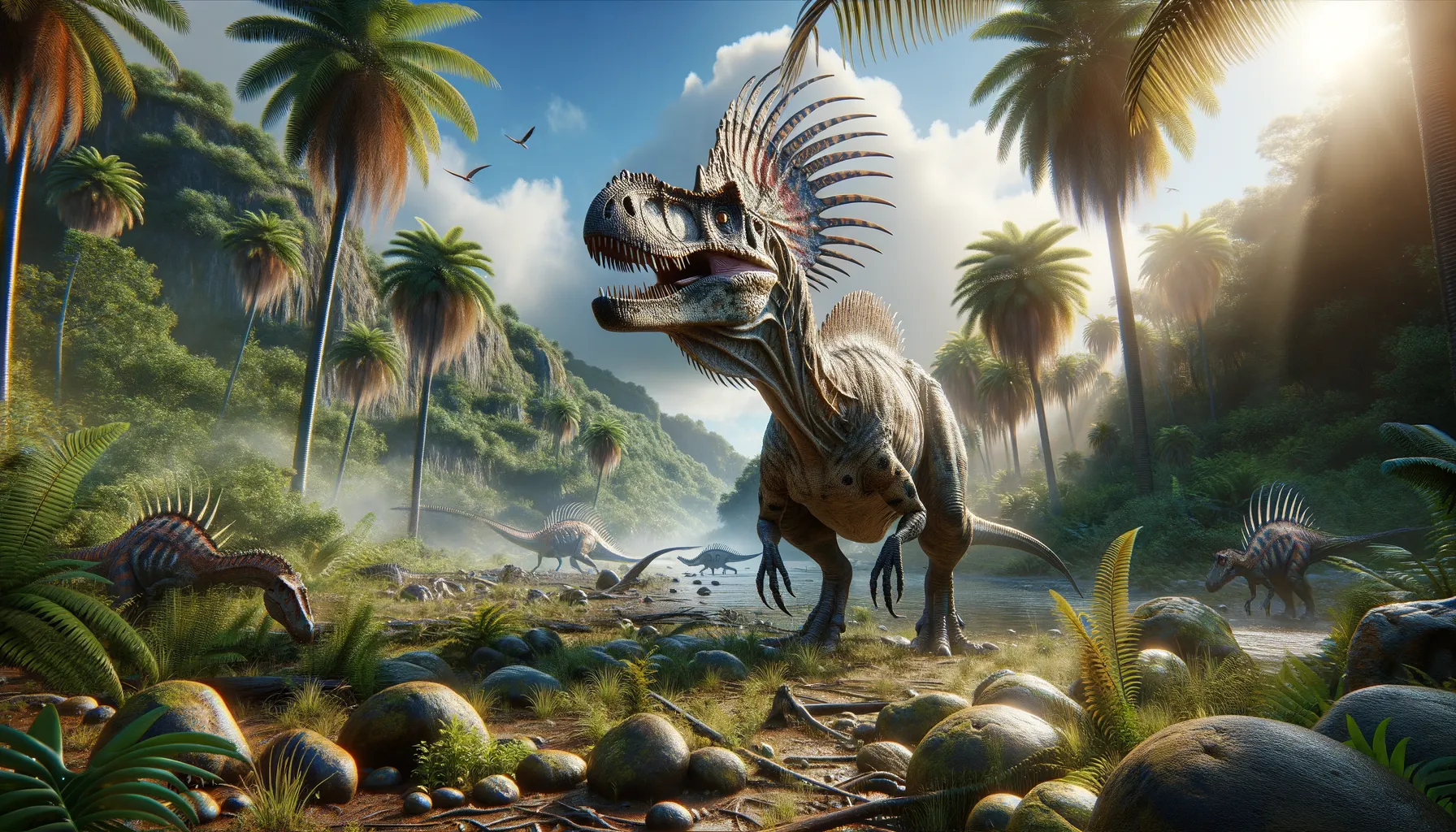
Alioramus
A sleek hunter of the late Cretaceous!
Period
Cretaceous
Length
Around 6 meters in length.
Height
Roughly 5 meters tall at the hip.
Weight
Approximately 1,500 kg.
Alioramus was a theropod dinosaur that lived during the Late Cretaceous period. Known for its elongated skull adorned with crests, it is believed to have been a close relative of the Tyrannosaurus. Despite being smaller, Alioramus showed adaptations that suggested a unique ecological niche, possibly hunting smaller prey or scavenging. Its fossils provide insight into the diversity of predatory dinosaurs thriving just before the mass extinction event.
Diet
Alioramus was carnivorous, likely preying on smaller dinosaurs and other animals. It may have also scavenged, taking advantage of carcasses left by larger predators.
Hunting
With its lighter build compared to some of its relatives, Alioramus might have relied on speed and agility to catch prey. It likely used its sharper teeth and strong jaws to subdue smaller or sick animals.
Environmental challenges
Living in a diverse ecosystem, Alioramus had to compete with other predators for food resources. The changing climate of the Late Cretaceous, including fluctuations in temperature and sea levels, posed challenges to its survival. Additionally, the presence of larger predators like Tyrannosaurus could have limited its hunting grounds, forcing it to adapt to different hunting or scavenging tactics.
Speed
Moderate runner with potential high-speed bursts.
Lifespan
Estimated to live up to 20 years.
First discovery
First discovered in the Late Cretaceous formations in Mongolia.
Fun Facts
- Alioramus was a carnivorous dinosaur that lived about 70 million years ago during the Late Cretaceous period.
- It is known from fossils found in what is now Mongolia, specifically the Gobi Desert.
- Alioramus belonged to the same family as the famous Tyrannosaurus rex, known for its sharp teeth and strong jaws.
- Unlike the T. rex, Alioramus is thought to have been relatively slender and possibly more agile, with a longer snout.
- One of the most distinctive features of Alioramus is the row of horns along the top of its snout, which might have been used for display or combat.
- The name 'Alioramus' means 'different branch,' highlighting its unique place in the dinosaur family tree.
- Alioramus was relatively small for a tyrannosaur, estimated to be around 6 meters (20 feet) in length.
Growth and Development
Alioramus may have exhibited relatively rapid growth rates during its juvenile stages to quickly reach a size that ensured better survival odds in a predator-rich environment. The growth patterns could provide insight into the life history of tyrannosaurids, showing how they adapted to ecological pressures. Evidence from bone studies suggests robust growth increments, indicating a seasonal diet-dependent growth.
Habitat
Alioramus lived in a region that was part of the temperate ecosystems of what is now Asia, featuring both open plains and forested areas. It inhabited areas with diverse flora and fauna, providing plenty of opportunities for hunting or scavenging. These habitats were dynamic, often influenced by volcanic activity and changing sea levels.
Interaction with other species
Alioramus likely coexisted with various other dinosaur species, including herbivores, which would have been potential prey. It may have had to avoid direct conflict with larger carnivores, seeking out ecological niches where it could operate without interference. The presence of smaller predators could have led to competition or subtle strategies to divide available prey among them.
Natural lifespan
Alioramus likely lived for about 15 to 20 years.
Reproduction
Like other theropods, Alioramus likely reproduced by laying eggs. Nesting sites would have been chosen for safety from predators and environmental conditions. Parental care could have been provided, as seen in related species, to protect and nurture the young in their vulnerable early stages.
Social behaviour
There is little direct evidence of the social behaviour of Alioramus, but it may have been a solitary hunter, like many modern predators. It is possible that younger individuals stayed with siblings or a parent until they were big enough to fend for themselves. The species might have communicated through vocalizations or other sensory means, especially during mating seasons.
Fossil locations
The primary fossils of Alioramus have been found in the Nemegt Formation in Mongolia. These remains provide crucial insights into the diversity of Late Cretaceous theropods in Asia. Further discoveries in similar formations could enhance understanding of its distribution and variation.
